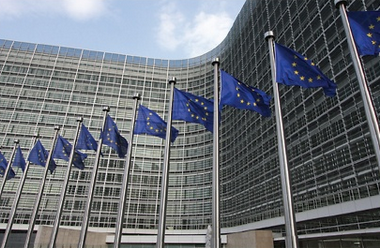The European Supervisory Authorities (ESAs) have adjusted proposed requirements under the EU sustainable finance disclosure regulation (SFDR) in response to stakeholder feedback, according to an announcement of the final draft rules today.
As set out in the ESAs’ consultation paper from April 2020, the plans for the regulated technical standards (RTS), originally due to be finalised for the end of December, were subject to strong pushback from industry, with concerns including the availability of data to complete the disclosures and the effectiveness of the envisaged disclosures.
The rules aim to strengthen protection for end-investors by improving disclosures to them on the principal adverse impacts of investment decisions and on the sustainability features of a wide range of financial products. The “principal adverse impacts” concept is a key innovation of the SFDR.
Steven Maijoor, chair of the ESAs joint committee, which delivered the final RTS proposal to the European Commission today, said: “The significant set of rules issued today provide a strong basis to improve ESG reporting and combat greenwashing.
“They strike a careful balance between achieving common disclosures across the range of financial products covered by the SFDR and recognising that they will be included in documents that are very diverse in length and complexity. The ESAs have listened to the consultation feedback from stakeholders and have adjusted the proposed disclosures.”
Changes made by the ESAs include a whittling down of the number of “adverse impact” indicators that will need to be reported against. Compared with the consultation proposal from April 2020, there are fewer universal mandatory indicators and more opt-in indicators.
The indicators are in relation to climate and the environment; and social and employee matters, respect for human rights, anti-corruption and anti-bribery aspects.
In addition, the ESAs have expanded the types of entities the adverse impacts could stem from. The consultation proposal only had a list of indicators applicable to exposures to investee companies, but the final draft RTS also provide separate indicators for impacts from investments in sovereigns (and supranationals), and real estate assets.
More prominence to engagement
Another change made by the ESAs in response to feedback from the consultation is “to give greater prominence to the engagement and other actions taken and planned by financial market participants [to mitigate adverse impacts]”.
The Principles for Responsible Investment, for example, had raised concerns that the rules would not factor in how investors act in relation to investee companies in a bid to drive positive change.
One point on which the ESAs does not appear to have shifted is with regard to the approach to have mandatory pre-contractual and periodic templates for financial products.
This was despite pensions industry representatives arguing that prospective members to a pension scheme who are automatically enrolled in a pension scheme should be provided with sustainability information after their enrolment, as they do not have an investment choice in those cases.
The ESAs noted that some respondents also argued that pension funds are not financial institutions and that employees do not take investment decisions, so IORPs should not require the same transparency obligations as other financial entities.
Commenting on this and other feedback related to the question about the templates, the ESAs said that on balance they believed that “mandatory templates for pre-contractual and periodic information is required to ensure comparability between products and to ensure consistent transparency to investors”.
The ESAs have also reiterated that they were not empowered to differentiate the disclosures between financial market participants and products, so the RTS contain a harmonised approach to all financial products.
What’s next?
The European Commission is expected to endorse the RTS within three months of their publication. The ESAs have proposed that the application date should be 1 January 2022, a schedule that is in line with expectations after the Commission already confirmed a postponement, while noting that financial market participants and financial advisers are required to apply most of the provisions on sustainability-related disclosures laid down in the SFDR from 10 March 2021.
The supervisory authorities said they planned to issue a public supervisory statement before the application date of SFDR “in order to achieve an effective and consistent application of the SFDR’s requirements and consistent national supervision of the SFDR”.
At Apex ESG Ratings & Advisory, Andy Pitts-Tucker, managing director, said: “The EU SFDR is a game-changer in the ESG world. With the release of the RTS today it is clear that disclosures will need to increase in their breadth and depth for many financial market participants.”









